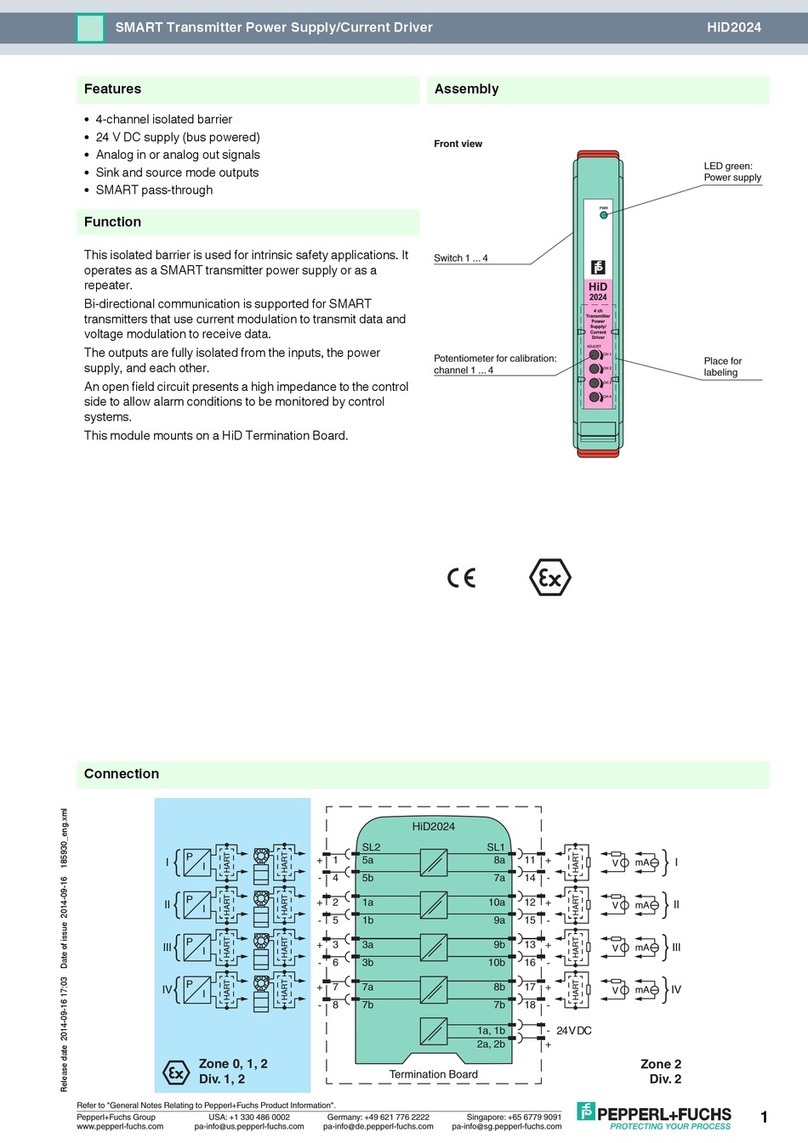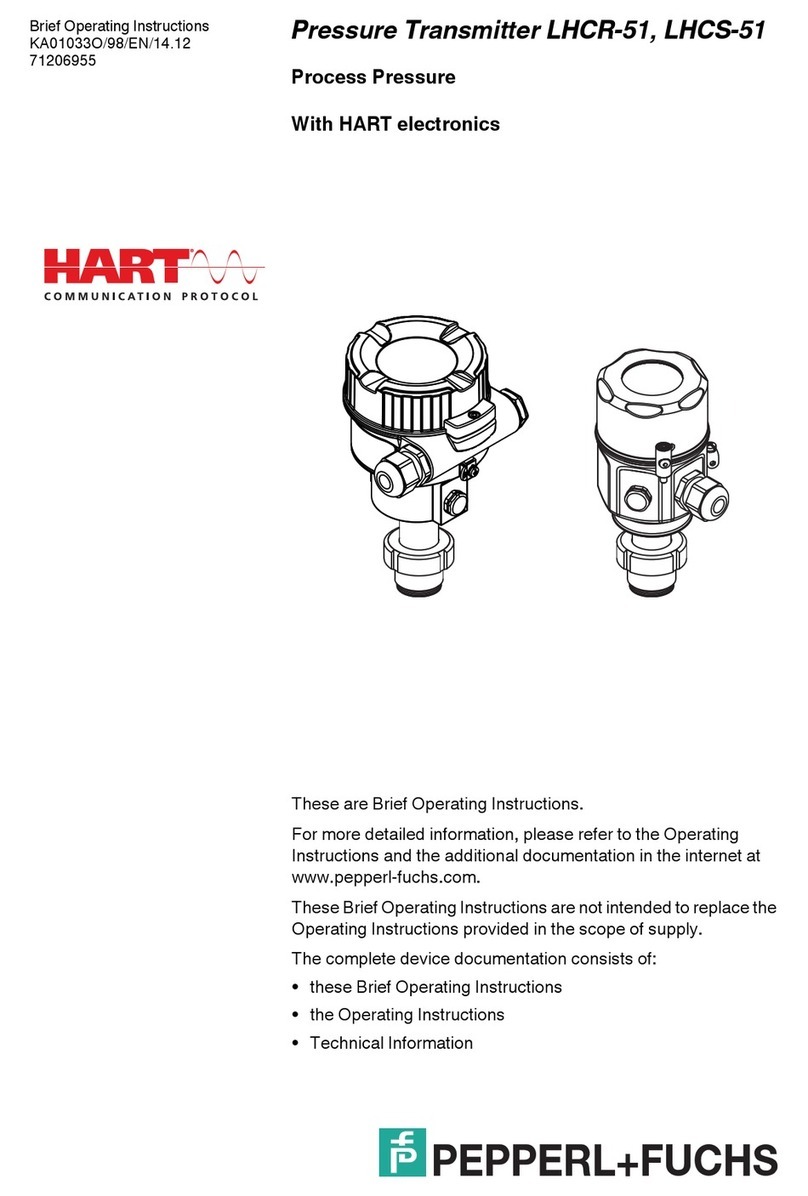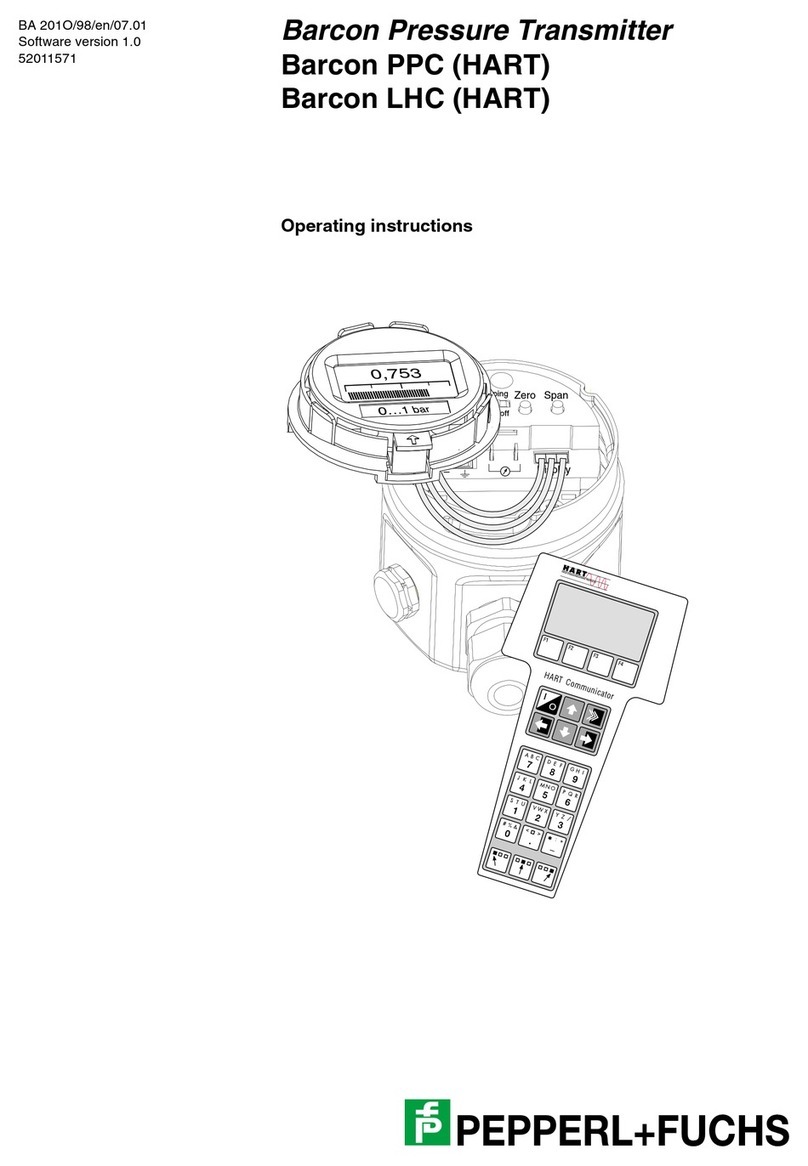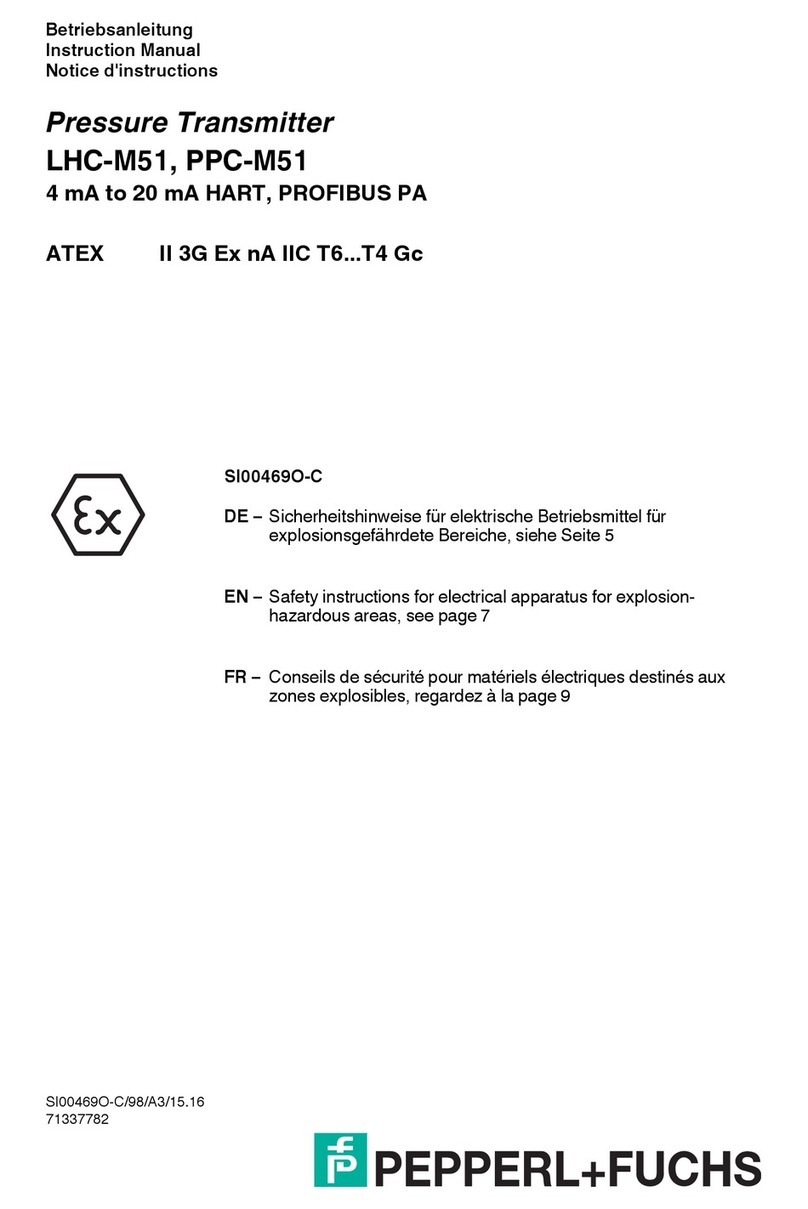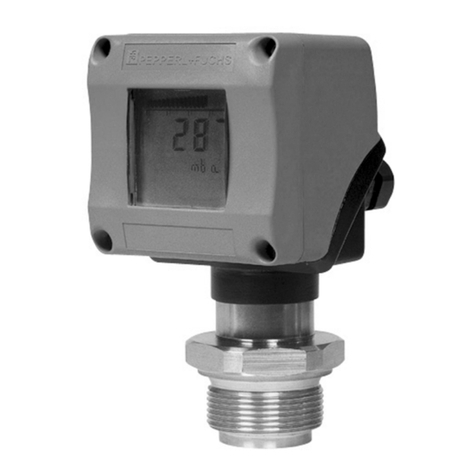
2012-07
4
Safety Manual SIL KCD2-STC-(Ex)1.HC(.SP), HiC2025HC
Introduction
1Introduction
1.1 General Information
This manual contains information for application of the device in functional safety
related loops.
The corresponding data sheets, the operating instructions, the system
description, the Declaration of Conformity, the EC-Type-Examination Certificate,
the Functional Safety Assessment and applicable Certificates (see data sheet)
are integral parts of this document.
The documents mentioned are available from www.pepperl-fuchs.com or by
contacting your local Pepperl+Fuchs representative.
Mounting, installation, commissioning, operation, maintenance and disassembly
of any devices may only be carried out by trained, qualified personnel. The
instruction manual must be read and understood.
When it is not possible to correct faults, the devices must be taken out of service
and action taken to protect against accidental use. Devices should only be
repaired directly by the manufacturer. De-activating or bypassing safety functions
or failure to follow the advice given in this manual (causing disturbances or
impairment of safety functions) may cause damage to property, environment or
persons for which Pepperl+Fuchs GmbH will not be liable.
The devices are developed, manufactured and tested according to the relevant
safety standards. They must only be used for the applications described in the
instructions and with specified environmental conditions, and only in connection
with approved external devices.
1.2 Intended Use
The devices are available as safe area version (KCD2-STC-1.HC(.SP)) where
they can be used as a signal conditioner providing isolation for non-intrinsically
safe applications. Also the devices are available as hazardous area version
(KCD2-STC-Ex1.HC(.SP), HiC2025HC) allowing use as isolated barriers for
intrinsic safety applications.
The device supplies 2-wire transmitters in the field, and can also be used with
current sources.
It transfers the analog input signal to the safe area as an isolated current value.
Bi-directional communication is supported for SMART transmitters that use
current modulation to transmit data and voltage modulation to receive data.
The output is selected as a current source, current sink, or voltage source via
DIP switches.
In the KCD2-STC-(Ex)1.HC(.SP) test sockets for the connection of
HART communicators are integrated into the terminals of the device.
